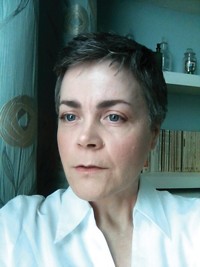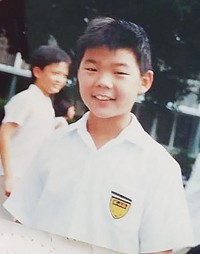Advertisement
Grab your lab coat. Let's get started
Welcome!
Welcome!
Create an account below to get 6 C&EN articles per month, receive newsletters and more - all free.
It seems this is your first time logging in online. Please enter the following information to continue.
As an ACS member you automatically get access to this site. All we need is few more details to create your reading experience.
Not you? Sign in with a different account.
Not you? Sign in with a different account.
ERROR 1
ERROR 1
ERROR 2
ERROR 2
ERROR 2
ERROR 2
ERROR 2
Password and Confirm password must match.
If you have an ACS member number, please enter it here so we can link this account to your membership. (optional)
ERROR 2
ACS values your privacy. By submitting your information, you are gaining access to C&EN and subscribing to our weekly newsletter. We use the information you provide to make your reading experience better, and we will never sell your data to third party members.
Science Communication
Newscripts
Science storytelling in scholarly work and in song
by Linda Wang
November 28, 2020
| A version of this story appeared in
Volume 98, Issue 46
A new chapter for doctorates

It’s no surprise that many recent PhD graduates want to share their dissertations with the world. After all the sweat and tears they put into their research, who wouldn’t want to tell the world, or at least their relatives, about it? But these tomes of science are hardly leisure reading for the average person.
The Chemistry Department at the University of Wisconsin–Madison set out to change that as part of an effort to improve science literacy. Ten years ago, UW-Madison chemistry professor Bassam Shakhashiri came up with the idea to have PhD candidates include a separate chapter in their theses that distills their research into something the general public can understand. The idea led to the Wisconsin Initiative for Science Literacy Award for Communicating PhD Research to the Public, which currently includes a $250 prize for submitting a chapter.
Since 2010, 83 graduate students have received the award. In fact, a few of them enjoyed the experience of explaining science so much that they decided to leave bench work behind and become full-time science communicators.
Writing the chapter for nonscientists led Matthew Windsor to an epiphany. He earned his PhD in organic chemistry in 2011 and is now part of the public communications team at the Society for Neuroscience. Windsor tells Newscripts he had more fun writing his chapter than he had doing science for years. “That made it crystal clear to me that I should be doing science communication–focused work rather than the science itself,” he says.
Ambalika S. Khadria, who is now a visual arts specialist at the University of North Carolina at Chapel Hill, followed a similar path into a career in science communication. As part of her 2015 PhD thesis, she not only translated her research on bacterial proteins into lay language but also interpreted her research through a dance choreography. “It definitely had a big role to play in shaping my career,” Khadria says of the experience. Her work today involves creating films about scientists. “Staying behind the lens has enabled me to develop a bird’s eye view of science which complements my decade-long deep dive into research,” she says.
Veronica Berns, who completed her dissertation in 2014, explained her research on quasicrystals as comics, which she turned into a comic book. Now an assistant professor of chemistry at Northwestern University, Berns uses comics to help her students learn. “My lectures always include original drawings, and I have even made a few comic books to explain particularly difficult concepts so that students have a reliable reference written in a different way from the textbook,” she says. This year, Berns is teaching a course on science communication, and she’s passing along some of the wisdom she’s gained: “Storytelling is at the heart of all science communication, regardless of the medium,” she says.
Shakhashiri agrees, adding that “cultivating a life-long commitment to sharing the joy and benefits of scientific research with the general public is part of graduate education.”
Taking a cue from songwriting

If picking up a pen is intimidating, Saurja DasGupta suggests reaching for a guitar instead. DasGupta, a Harvard Medical School postdoctoral researcher and amateur songwriter, thinks scientists can hone their writing skills through song.
“The act of writing a song from scratch is similar to writing something in science,” DasGupta tells Newscripts. One of his favorite techniques is the use of repetition. “I realized that what makes the song sort of stick to your head is a catchy hook,” he says. “A lot of times, scientists, we don’t bother with these sorts of catchy hooks.” But DasGupta says repeating the key takeaway from your research in a presentation, for example, can help your audience remember that information.
He has another tip: to prevent writer’s block, write everything down that comes to mind—a technique DasGupta uses in songwriting. “It doesn’t matter if it’s in order or not; keep it somewhere, and then you can go back and sort them out and get to something that’s more structured.”
DasGupta says that his science has also helped him not give up when he’s working on new songs. Graduate school has taught him that if something doesn’t work, “you have to come back and try it again.”
Please send comments and suggestions to newscripts@acs.org.





Join the conversation
Contact the reporter
Submit a Letter to the Editor for publication
Engage with us on Twitter